Do Not Mention Them Again the Earth Is Yours
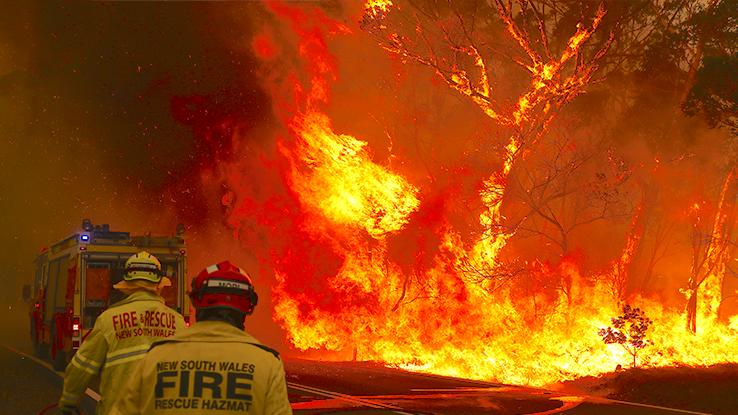
2020 got off to a rocky offset — and and so turned into a consummate climate disaster. On top of the COVID-19 pandemic, the globe went through many environmental emergencies this year. Some of them forced thousands of people to flee their homes, while others have impacted wildlife forever. According to Scientific American, the U.S. alone experienced sixteen natural disasters that cost more than than $one billion in damages — each.
Many ecology experts believe that climatic change played a key office in recent crises. With the Paris Agreement climate pact at present approaching five years since its drafting, this topic is more important than e'er. For 2020, we're highlighting the most farthermost natural disasters on the planet, ranging from tape-breaking woods fires to highly disturbing locust swarms, to aid raise awareness about our ever-growing global climate crisis.
The Atlantic Hurricane Season Shattered Records
The National Hurricane Center's Twitter account described 2020's hurricane season the best: "Ugh." The season was crazy busy, with a tape high of 30 storms. In that location were and so many tropical cyclones that meteorologists ran out of names to give them, and then they used letters of the Greek alphabet — only the second time this has ever happened.
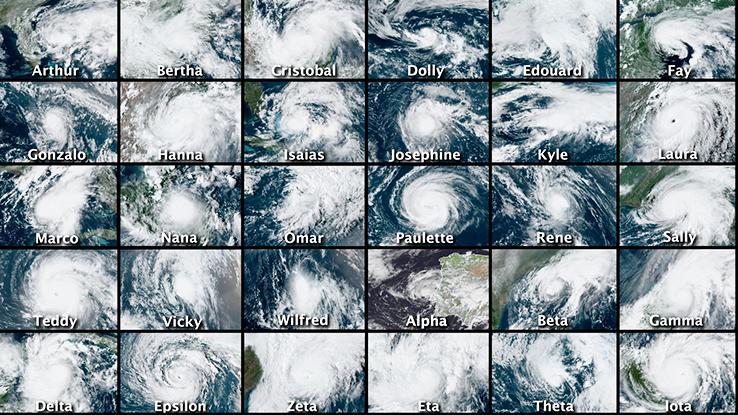
The Atlantic'south warmer water and air temperatures created the perfect recipe for non-stop hurricanes from June to Nov. The worst role is just how strong and massive the storms were. For instance, Hurricane Hanna dumped more than xv inches of rain on South Texas, causing flash floods and power outages everywhere. Another deadly storm, Hurricane Isaias, unleashed a fury of tornadoes in Virginia, Maryland, Delaware and New Jersey.
After a wild hurricane season, the final thing nosotros desire to think about is the possibility of more hurricanes. Unfortunately, farthermost-weather good Jill Trepanier believes the situation volition get worse. "Rapid intensification seems to be the name of the game right now," Trepanier said. "We should expect to see events intensify quickly when conditions are as warm equally they are before long."
Northern California Skies Turned Apocalyptic Orange and Carmine
Nosotros all knew wildfire season was coming to California, but nosotros didn't expect information technology to turn into a scene from Stranger Things or Blade Runner 2049. In September, Northern California residents woke up to a dark orange-red sky that looked as though the end of the globe was approaching.
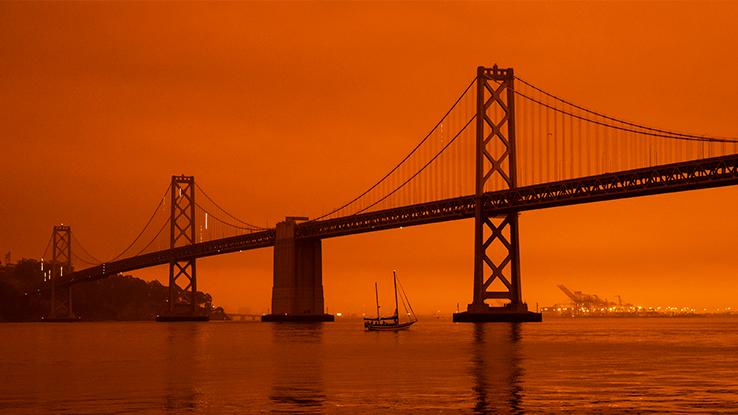
Why was the sky glowing in these strange colors? It all started with an abnormal thunderstorm in August, which brought more than 9,000 lightning strikes across the dry, hot state. The rare spectacle sparked 500 wildfires — and the worst wildfire flavour in California history.
The fume from the northern fires blew into the Bay Area and stayed at a loftier altitude due to extreme winds, ultimately causing this miracle. With the sunday nowhere in sight, "What time is it?" became the most-asked question on the Westward Declension for nearly two weeks.
Africa, Asia and the Middle E Experienced Biblical Plagues of Locusts
Just when we idea the world couldn't get stranger this year, swarms of locusts turned the sky nighttime and consumed everything in their way similar a verse from the Bible. The Guardian reported that Kenya went through the worst outbreak of locusts in lxx years, and Uganda, Bharat and Islamic republic of pakistan were also living in a nightmare because of these pests.
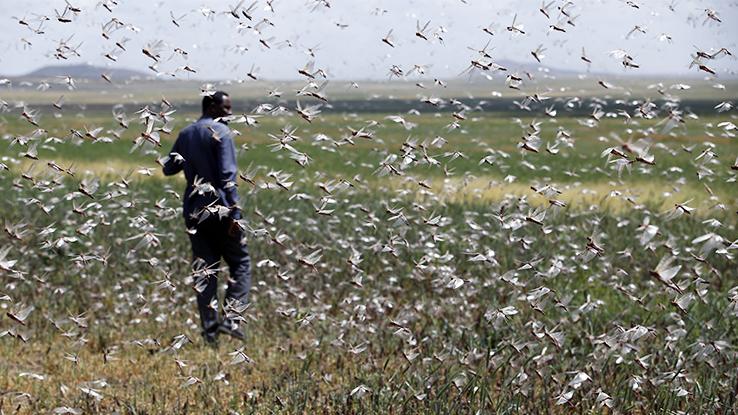
Thanks to climatic change, unusually heavy rain in the regions created the perfect locust breeding grounds, leading to massive new swarms. Co-ordinate to National Geographic, "Swarms can swell to 70 billion insects — enough to blanket New York City more than than once."
Although these pests don't harm humans, they tin can cause a hunger crisis; a swarm is powerful enough to destroy crops, pasturelands and copse. The Famine Early Warning Systems Network predicts that locusts can devour enough crops to feed 280,000 people for six months in Somalia. Hopefully, the affected regions can preclude those pests from causing any more damage.
The Philippines Endured a Volcanic Eruption and Thousands of Tectonic Earthquakes
Did you know that the Philippines is dwelling to 23 active volcanoes? The thought that these land formations can erupt at whatever moment is a frightening 1. Then, when Taal, the second virtually active volcano in the country, began to shake, those fears became a terrifying reality for the surrounding residents.
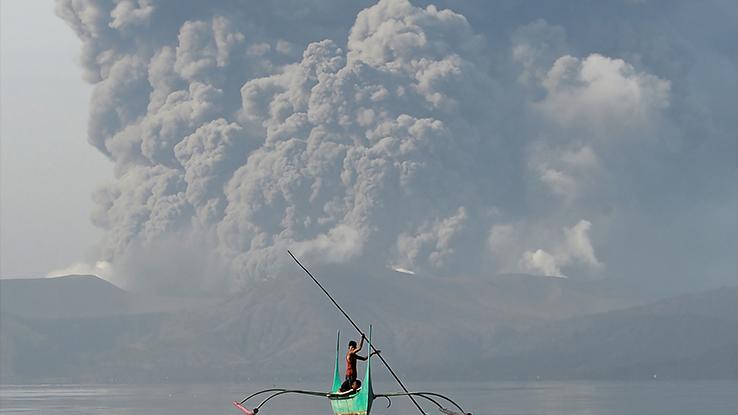
In early on January, the volcano spewed gas, lava and ash into the air. This prompted the Philippine Establish of Volcanology and Seismology (PHIVOLCS) to release an Alarm Level 4 — pregnant a dangerous explosive eruption was possible inside hours to days. According to the New York Post, 300,000 people needed to flee.
By the end of Jan, the alert on the volcano was lowered, assuasive residents to return to villages buried in thick layers of ash and destroyed homes. Unfortunately, this wasn't Taal'southward last rumble; the PHIVOLCS reported a total of two,484 volcanic-tectonic earthquakes near the volcano. Poultry farmer Emer Siscar told The New York Times, "It looks similar we now have a more active volcano going forrad."
Commonwealth of australia'southward Black Summertime Led to Billions of Wild fauna Lost
Things went from bad to worse in Australia equally flames and smoke covered forests and cities from June 2019 to May 2020 — a year known as Black Summer. The mortiferous wildfires forced thousands to evacuate, burned at least 46 million acres and destroyed 6,000 buildings. Another heartbreaking outcome was the decease and harm of almost iii billion animals. More 100 species were in demand of "urgent help" to survive, including koalas, wallabies and several species of birds. Many of their beautiful habitats vanished in the devastation, making it challenging for the animals to observe food and shelter.
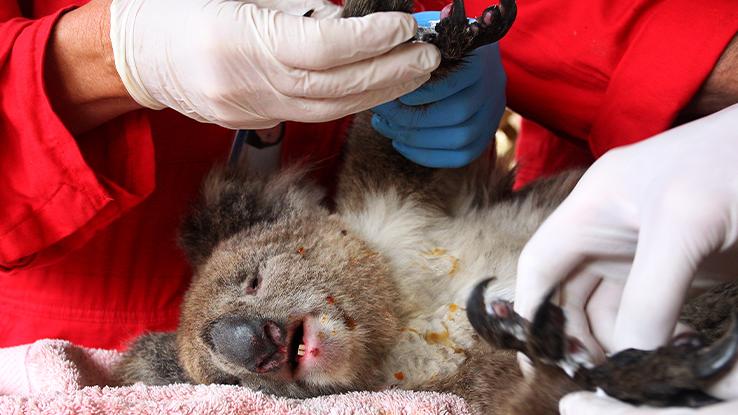
Why were the fires and so catastrophic? With record-breaking temperatures and months-long droughts, in that location was more energy to power the fires. Climatologist Joanna Wibig believes climate change is to blame, saying, "Climate change definitely contributes to fires spreading more than hands, in Australia, but likewise in California, for example."
On a positive note, some rescued animals take been released back into the wild — but look at this koala climbing a tree. With so much loss, it'southward comforting to know that some animals were saved and returned home.
Our cute planet is transforming at an alarming rate. This is a trouble; the changes in temperature tin can crusade dangerous shifts in climate and weather. This devastating yr of disasters is a reminder of the seriousness of climate change. By post-obit guidance from climate experts and taking firsthand action to salve the planet, we tin can help shape the futurity in preserving the health of Globe.
marlowsaidecalown.blogspot.com
Source: https://www.ask.com/culture/biggest-environmental-disasters-2020?utm_content=params%3Ao%3D740004%26ad%3DdirN%26qo%3DserpIndex
Post a Comment for "Do Not Mention Them Again the Earth Is Yours"